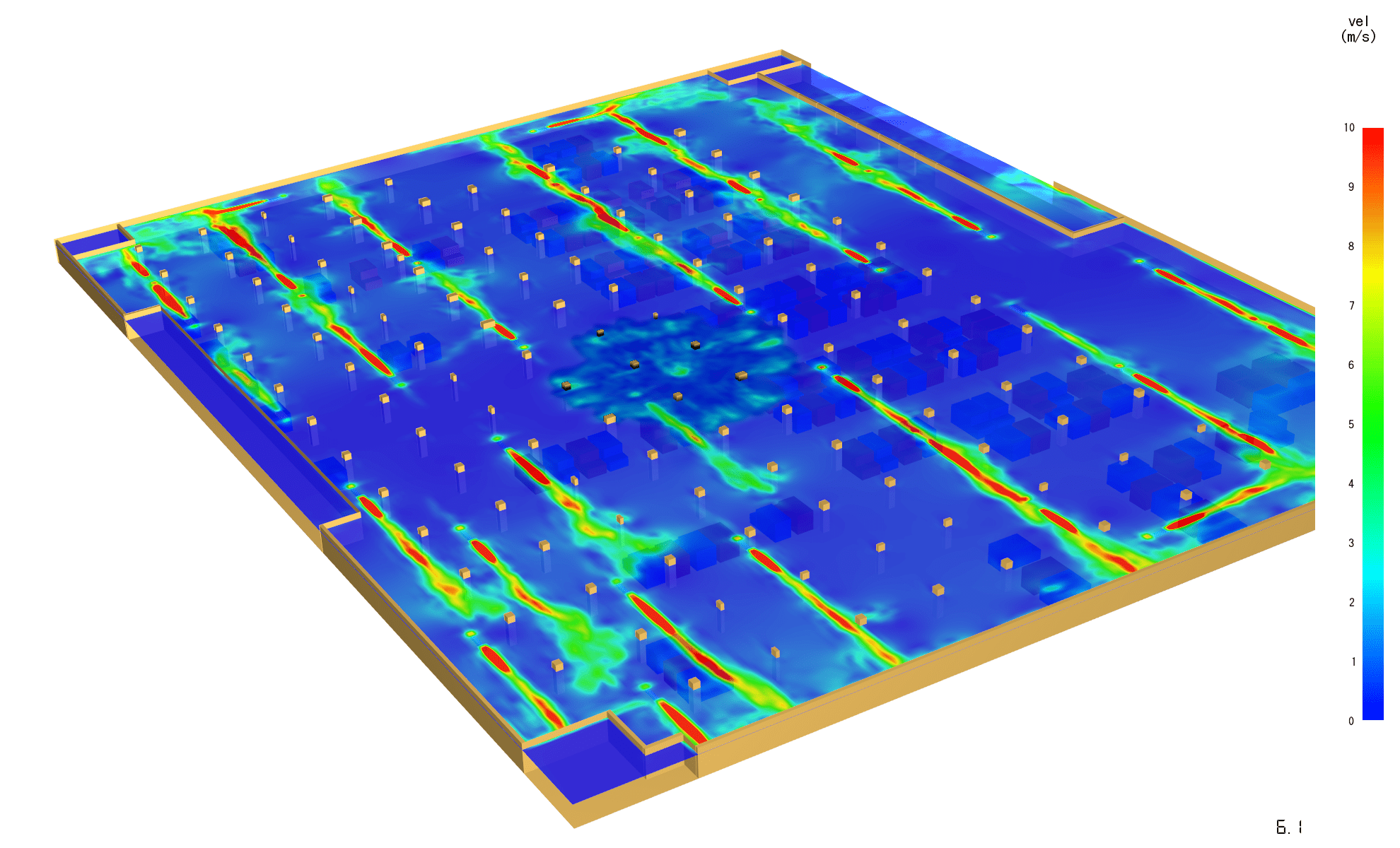
Fire and smoke simulation in high-rise buildings is essential for ensuring the safety of the occupants and the building itself. It helps to predict the behavior of fire and smoke, identify potential hazards, and evaluate evacuation plans and fire suppression systems. This information is used to make necessary changes to building design, construction, and maintenance, to minimize the risk of fire and improve emergency response efforts.
At MaxBrain, we provide you with the highest quality Fire and Smoke CFD simulation services.
MaxBrain provides services for evaluating the effectiveness of smoke exhaust systems in complex buildings such as Railway stations, Car Parking, airports, malls, museums, and auditoriums. By using CFD simulations, MaxBrain Technologies can model the spread of smoke in a building, allowing them to assess the performance of the smoke exhaust system and identify any potential areas of improvement. This helps to ensure the safety of building occupants, protect the building and its contents, and optimize the overall effectiveness of the smoke exhaust system.
When using Computational Fluid Dynamics (CFD) simulations for fire and smoke simulations in buildings, the following approaches can be used:
Mesh Generation: A mesh needs to be created to represent the building’s geometry, including walls, floors, ceilings, and openings. This mesh is used to simulate the flow of air and smoke in the building.
Modeling Fire Sources: The fire source or sources need to be defined and modeled in the simulation, including the size, shape, temperature, and heat release rate of the fire.
Specifying Boundary Conditions: Boundary conditions, such as air velocity and temperature, need to be specified to represent the real-world conditions in the building. This can include wind velocity, temperature, and humidity.
Solving the Equations: The CFD simulation software solves mathematical equations to model the flow of air and smoke in the building, based on the mesh, fire source, and boundary conditions.
Visualizing the Results: The results of the simulation can be visualized using graphical tools, such as contour plots and 3D animations. This allows engineers to understand how fire and smoke will spread in the building, identify areas of risk, and evaluate the effectiveness of fire protection systems.
Verifying the Results: The results of the simulation need to be verified by comparing them to real-world data, such as measurements taken during physical testing or real-world fires. This helps ensure the accuracy of the simulation and allows for improvements to be made to the simulation model.
By using these approaches, CFD simulations can provide valuable insights into the behavior of fire and smoke in buildings, allowing engineers to design safer and more effective fire protection systems.




Our approach to Building Air Flow Analysis is simple – to combine cutting-edge, proven, and innovative techniques for delivering high-quality, long-lasting services – providing our clients a competitive advantage.
As per Our Services Optimization of smoke exhaust systems involves maximizing efficiency, ensuring proper ventilation, and enhancing performance to minimize harm from smoke and improve building safety. This involves regular maintenance, upgrading equipment, and utilizing modern technology to meet fire safety standards.
View Case Study

Optimization of JET fans is critical for enhancing the realism of fire and smoke simulations. Accurate depiction of smoke and fire flow and spread is achieved through optimized JET fans, providing a safe and effective training environment for participants to learn and practice emergency response procedures.
View Case StudyBuilding construction that adheres to international smoke and fire standards helps to ensure the safety and effectiveness of fire and smoke simulations. These standards set guidelines for the design, construction, and maintenance of buildings to minimize the spread of fire and smoke, allowing for safe and realistic simulations. Adherence to these standards helps to enhance the training and learning experience for participants, ensuring that they are well-prepared to respond to real-life emergencies.
View Case Study

Reduction in exhaust gases is an important aspect of fire and smoke analysis as a service. This involves minimizing the amount of harmful gases produced during fire and smoke simulations, ensuring the safety of participants and the environment. By reducing exhaust gases, fire and smoke analysis services can provide a safer and more sustainable learning environment, while also reducing the impact on the environment. This helps to ensure that the simulations are not only realistic but also responsible, providing participants with a well-rounded training experience.
View Case StudySmoke and fire simulations should be as realistic as possible, replicating the appearance, behavior, and spread of smoke and fire in real-life scenarios.
The simulations should be adaptable to different training or demonstration needs, including different levels of detail, different types of smoke and fire, and different types of environments.
The simulations should be interactive, allowing users to control various aspects of the simulation and explore different scenarios.
The simulations should be accessible to a wide range of users, including those with disabilities, and should be easy to use and understand.
Smoke and fire simulations are used for training purposes, so they should be safe for participants, minimizing any potential health or safety risks.
Smoke and fire simulations should be cost-effective, providing a high level of value for the cost.
Overall, smoke and fire simulations are valuable tools for training and demonstration purposes, providing a safe and effective way to learn about and explore different scenarios related to smoke and fire.




